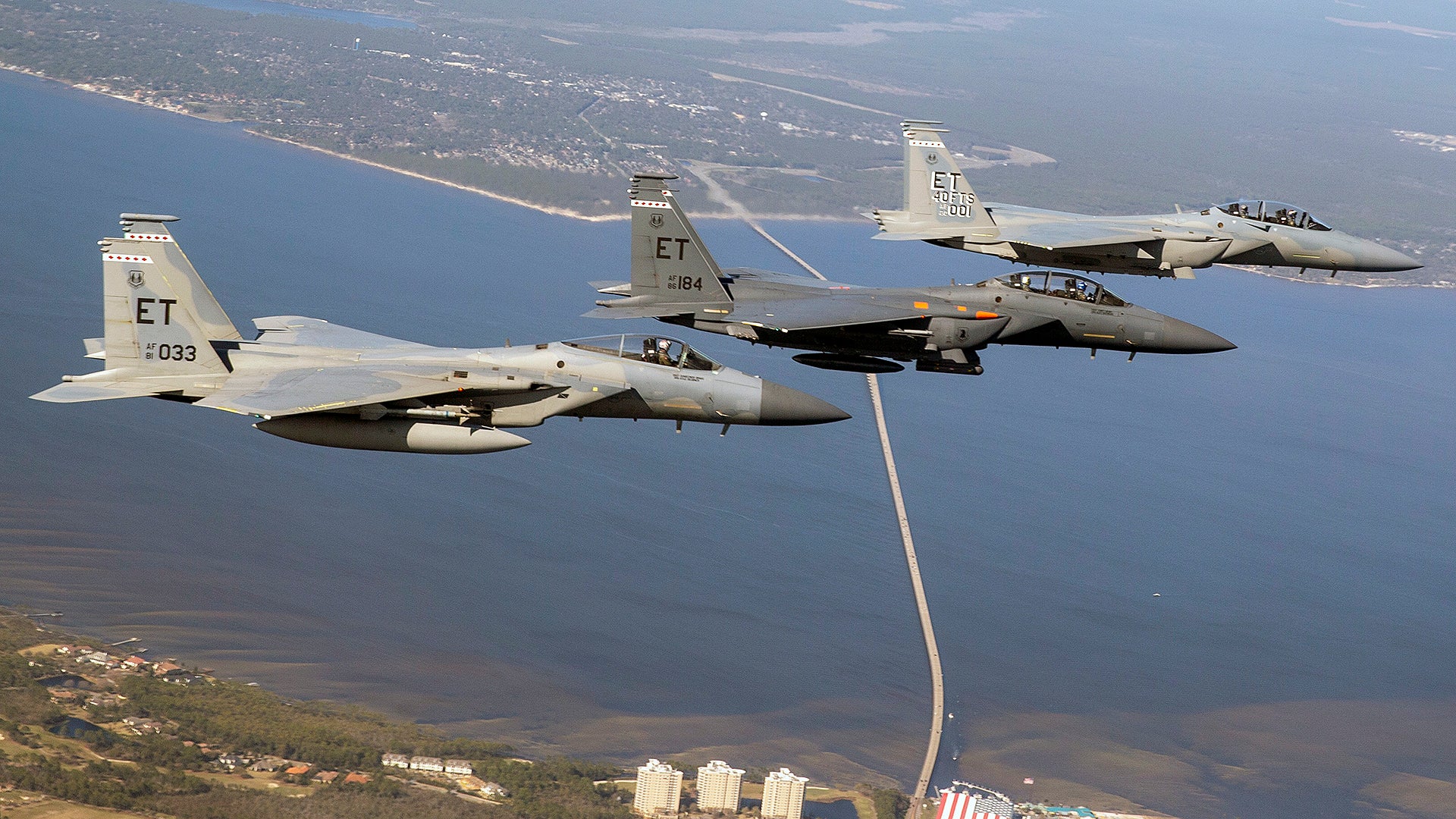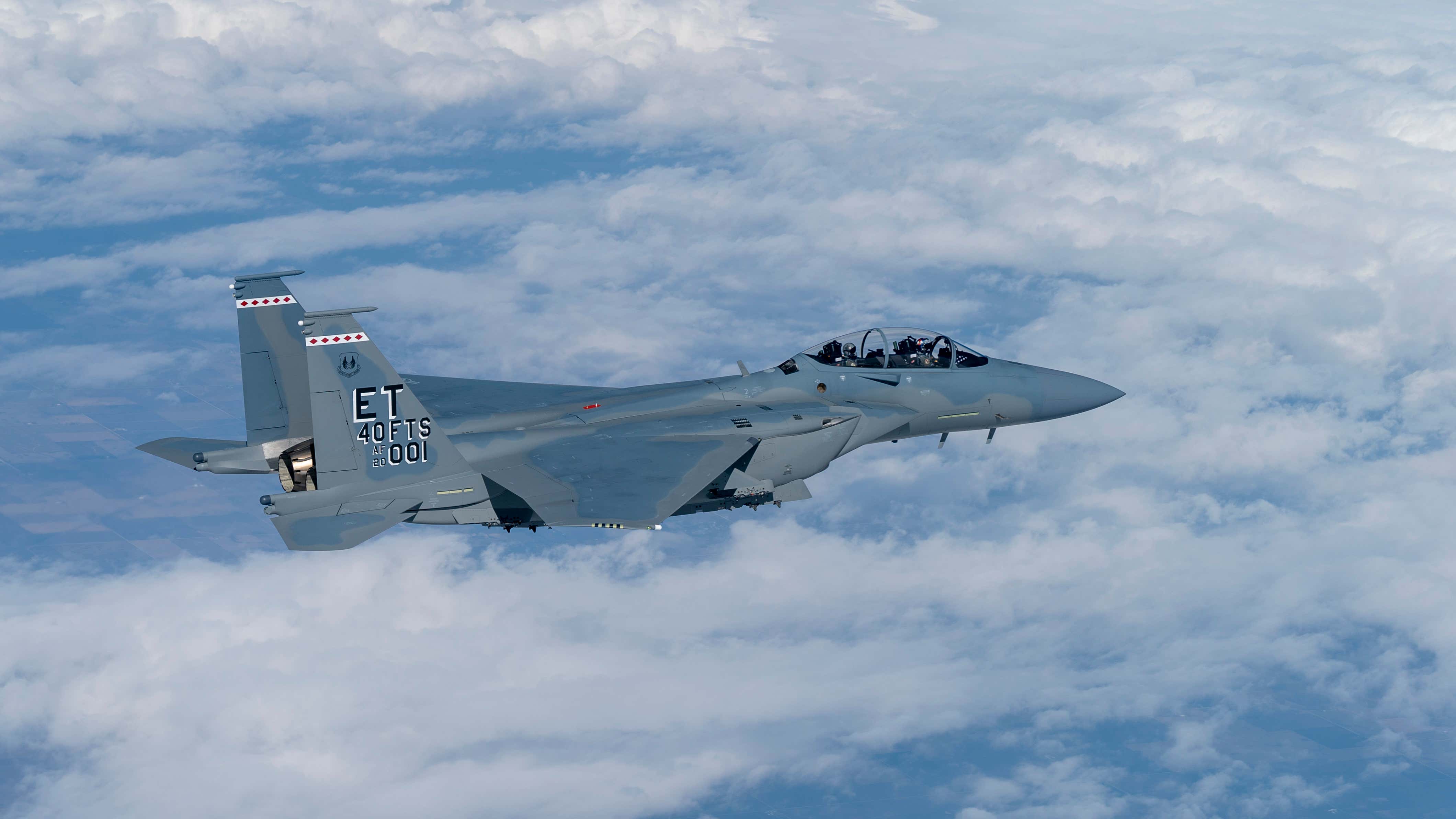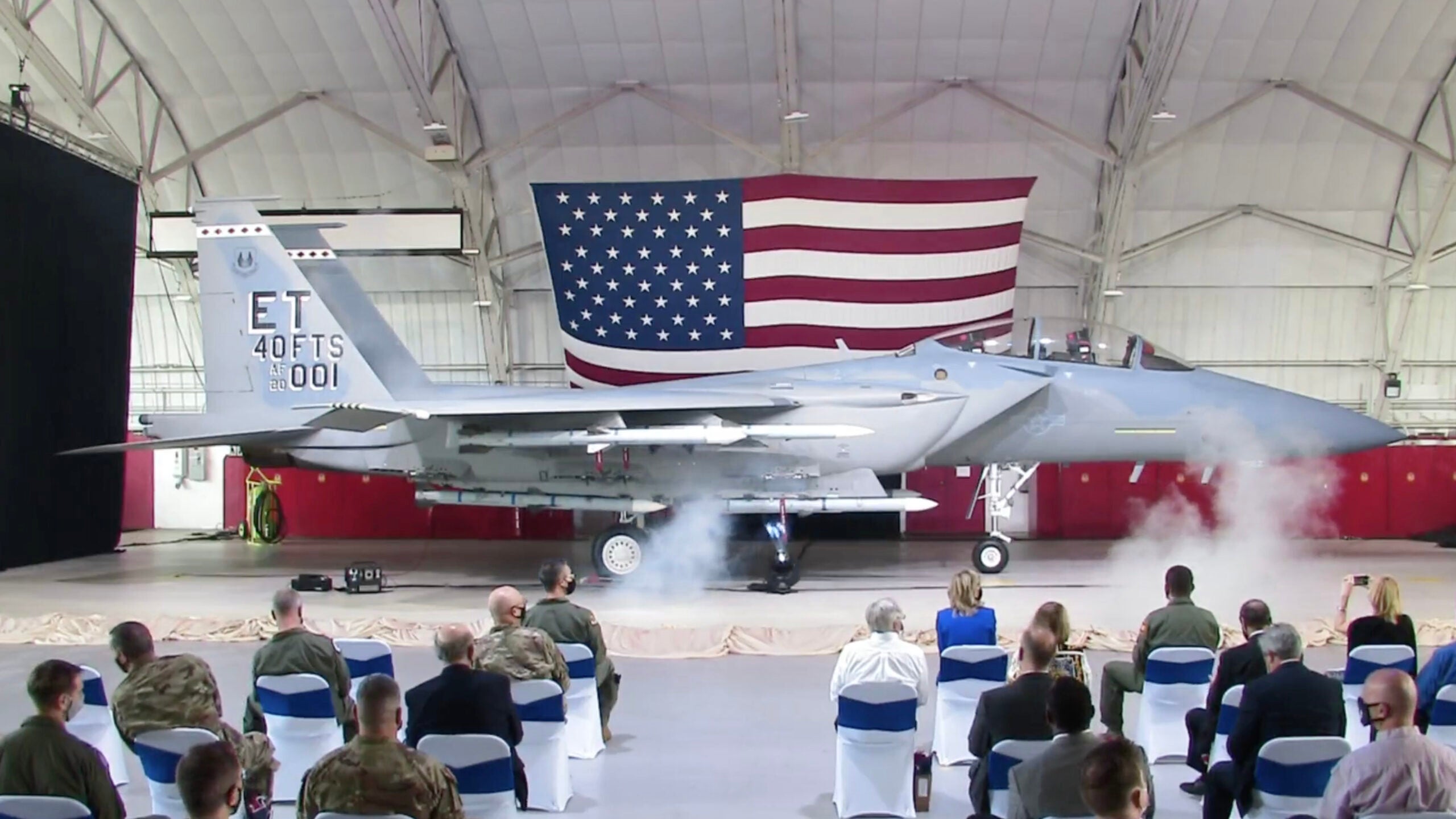The U.S. Air Force’s latest fighter jet, the Boeing F-15EX, has officially been named Eagle II, in a ceremony that took place today at Eglin Air Force Base in Florida. The event, which also saw a relatively low-key official rollout of the first of these jets, serial number 20-0001, played very much on the illustrious legacy of the fighter with the Air Force, and the choice of name, which is bound to disappoint some, is no doubt intended to draw upon the type’s unrivaled post-war combat record.
The first F-15EX had been accepted by the Air Force on March 10 and, after being ferried from Boeing’s St. Louis, Missouri, facility to Eglin, is now undergoing testing by the 40th Flight Test Squadron. This was the first new F-15 to be delivered to the Air Force in 17 years and it represents a major change in the way the service procures fighters and one which could have significant repercussions as it looks to balance its fleet to meet emerging threats.

It was around two and a half years ago that The War Zone broke the F-15X story — before the aircraft received the F-15EX designation. Since then we have provided updates on the fighter and the potential changes it could bring to the Air Force. You can read much more on the topic by clicking here and here. Most recently, we reported on the official confirmation that the F-15EX is now also being earmarked for the carriage of new hypersonic weapons, news that was again indicative of the transformative effect that the jet could have on the Air Force.
The service plans to eventually buy at least 144 of these aircraft to replace its aging F-15C/D Eagles and there have also been discussions about acquiring yet more of them to supplant its F-15E Strike Eagles, as well. During the naming and unveiling ceremony today, Lieutenant General Duke Z. Richardson, the Military Deputy, Office of the Assistant Secretary of the Air Force for Acquisition, Technology, and Logistics, noted that 10 percent of the current F-15C/D fleet is grounded due to structural issues, while 75 percent of the jets have exceeded their planned service life. With a 20,000-hour planned airframe lifespan, the F-15EX is likely to be around for at least half a century — all in all, pretty remarkable considering the original F-15 celebrates the 50th anniversary of its first flight next year.
The newly named F-15EX will now continue its test program at Eglin, prior to service entry in an operational capacity. A second test jet, serial 20-0002, is in the final stages of production, with delivery to the 85th Test and Evaluation Squadron also planned for this month. The 40th Flight Test Squadron and the 85th Test and Evaluation squadron will conduct developmental and operational testing simultaneously. Another four more jets are set to be handed over to the Air Force by the end of Fiscal Year 2023, if not before.

Thereafter, the first jets are due to be delivered to the Oregon Air National Guard’s 173rd Fighter Wing, the Air National Guard’s main F-15C/D training unit, based at Kingsley Field, in Fiscal Year 2024. The following year, the 142nd Fighter Wing, another Oregon Air National Guard unit, at Portland Air National Guard Base, is slated to become the first operational unit to fly the jet in Fiscal Year 2025. Responsible for 93 percent of all homeland defense missions, the Air National Guard will recapitalize all its F-15C/Ds with either F-15EX or F-35A jets, although the precise balance is yet to be disclosed.
There remains, too, a question mark over which powerplant will be used for subsequent batches of F-15EX jets. While the first six examples are being outfitted with General Electric F110-GE-129s, the Air Force will hold a competitive process to decide whether to retain this engine or switch to the rival Pratt & Whitney F100-PW-229.
The path toward making the F-15EX operationally ready should also be smoothed by using testing data gathered from previous F-15 Foreign Military Sales variants — like the Qatari F-15QA variant upon which the F-15EX is based. Instead of full-up survivability testing on the new aircraft, the Air Force has also elected to call upon existing data, a voice it says will save $108 million and accelerate the testing process.
Critical to the aircraft’s survivability will be the Eagle Passive/Active Warning Survivability System (EPAWSS), a radar warning and electronic warfare suite that is already in development and which has been put to the test in a large-force exercise scenario onboard the F-15E.

As the Air Force increasingly distances itself from longstanding plans to acquire more than 1,700 examples of the F-35A stealth fighter, the future prospects for the F-15EX look good. Already, officials are speaking openly about tentative plans to buy new F-16 fighter jets, as well as to cut F-35A numbers, and focus more on the potential offered by various unmanned platforms.
While officials have been keen to reiterate the centrality of the F-35 to its plans, the stealth jet is now increasingly referred to in terms of being a “high-end” fighter, in the words of Air Force Chief of Staff General Charles Brown, opening the door to purchases of more cost-effective types, that can be procured rapidly, like the F-15EX.
In the meantime, the focus of much attention will be on the less-than-inspired choice of name. Since the original F-15 Eagle, the Air Force has introduced the F-15E Strike Eagle, while the Golden Eagle name was applied semi-officially to the 179 or so F-15C/Ds that were slated to be deeply upgraded and retained. The F-15EX has since displaced those plans.
Boeing, for its part, has pushed the Advanced Eagle name while marketing its latest F-15 iterations, of which the F-15EX is directly related. On the other hand, the “II” suffix follows recent trends with the F-35 Lightning II, as well as the Jolly Green II, the Air Force’s next combat search and rescue helicopter. Looking further back, the A-10 Thunderbolt II also directly recalled a historic, albeit unrelated, Air Force type. Time will tell if the new name sticks, or if, like the F-16 Viper, those who fly and maintain the F-15EX use a different nomenclature altogether.
The future for the Eagle II, whether you like the name or not, looks bright.
This article has been updated with an additional paragraph discussing the naming decision.
Contact the author: thomas@thedrive.com
